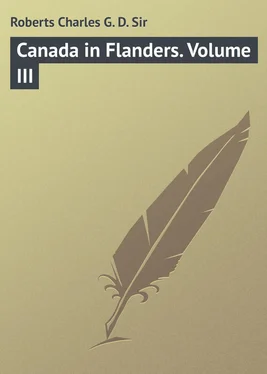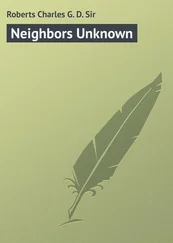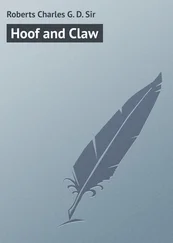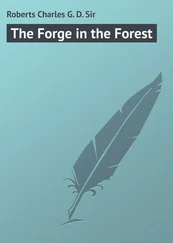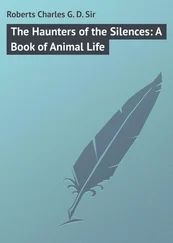Charles Roberts - Canada in Flanders. Volume III
Здесь есть возможность читать онлайн «Charles Roberts - Canada in Flanders. Volume III» — ознакомительный отрывок электронной книги совершенно бесплатно, а после прочтения отрывка купить полную версию. В некоторых случаях можно слушать аудио, скачать через торрент в формате fb2 и присутствует краткое содержание. Жанр: foreign_prose, foreign_language, на английском языке. Описание произведения, (предисловие) а так же отзывы посетителей доступны на портале библиотеки ЛибКат.
- Название:Canada in Flanders. Volume III
- Автор:
- Жанр:
- Год:неизвестен
- ISBN:нет данных
- Рейтинг книги:3 / 5. Голосов: 1
-
Избранное:Добавить в избранное
- Отзывы:
-
Ваша оценка:
- 60
- 1
- 2
- 3
- 4
- 5
Canada in Flanders. Volume III: краткое содержание, описание и аннотация
Предлагаем к чтению аннотацию, описание, краткое содержание или предисловие (зависит от того, что написал сам автор книги «Canada in Flanders. Volume III»). Если вы не нашли необходимую информацию о книге — напишите в комментариях, мы постараемся отыскать её.
Canada in Flanders. Volume III — читать онлайн ознакомительный отрывок
Ниже представлен текст книги, разбитый по страницам. Система сохранения места последней прочитанной страницы, позволяет с удобством читать онлайн бесплатно книгу «Canada in Flanders. Volume III», без необходимости каждый раз заново искать на чём Вы остановились. Поставьте закладку, и сможете в любой момент перейти на страницу, на которой закончили чтение.
Интервал:
Закладка:
In this, the first of our daylight raids, no prisoners were taken. The action was too swift and the encounters were too violent to permit of the removal of a single living Hun; but the operation was highly successful. The occupants of the trench were identified as the Royal Württembergers; valuable information of a technical nature was obtained; two machine-guns were put out of action and other machine-gun and trench-mortar emplacements located; many of the garrison of the trench were shot, and four large dug-outs, crowded with men, were effectively bombed; and it is reasonable to suppose that the casualties inflicted by our artillery were severe. Lieutenant H. R. Dillon, Canadian Field Artillery, who acted as Forward Observation Officer throughout the operation, did splendid service, especially during the rescue of Captain Kilmer, when he stood fully exposed in No Man's Land at a point within forty yards of the German trench, and from there directed the fire of his battery. Lieutenant Hooper, of the 19th Battalion, whose active command during the raid included a Lewis gun, snipers, and a telephonist, also did fine work.
On the night of August 5th-6th the 27th (City of Winnipeg) Battalion sent a raiding party into the enemy trenches opposite their front, with the usual objects of obtaining prisoners and information and inflicting casualties. This raid was daringly executed; but the fighting in the trench was so severe that no prisoners were taken. Lieutenant Harris was wounded while carrying a wounded German toward the point of entry. Two unwounded Germans were caught, but owing to their struggles and the depth of the trench the efforts of their captors to expel them over the parapet were ineffectual.
Eight nights later Lieutenant Clarkson of this same Battalion led another party into the enemy's lines and succeeded in bringing out a prisoner. The garrison of the invaded trench suffered heavily. Of Clarkson's party only one man was wounded.
A party from the 28th (North-West) Battalion, supported by the artillery of Stuart's Group, our trench-mortars, and Stokes guns, entered the enemy's trenches in the neighbourhood of Ruined Farm on the night of August 10th-11th. Lieutenant T. L. O. Williams, who commanded the raiders, was wounded. The enemy and his trenches were severely knocked about and a prisoner was brought back.
A dummy raid on the hostile positions at the Hollandscheschuur Farm and Quarante Wood salients was successfully practised by Dodd's Group, C.F.A., and the 10th (Ontario) Battalion in the early hours of August 15th. The object of this long-headed enterprise was to draw the Germans in force into their front-line trenches and there drub them thoroughly with the combined fire of our field batteries, Stokes guns, and machine-guns.
At 3.45 a.m. three white flares were sent up from our lines, and at the same time the enemy's entanglements were violently shaken by means of strong wires which connected them with our forward positions. The Germans immediately took alarm and subjected their own entanglements to a heavy grenade bombardment along the whole front from the Quarante Wood to the Chemin de Poperinghe. Our artillery and Stokes guns then opened heavily and accurately on selected targets on the enemy front and support trenches. The Germans promptly attempted a retaliation with the fire of a five-point-nine battery; but as their first two shells fell in their own lines at the Farm, the third in No Man's Land, and the next thirty-seven on various points behind and in their own defences, they soon became discouraged.
In addition to the casualties and material damage inflicted by our fire, the enemy must have suffered heavily from the erratic performance of his own five-point nines.
On the 17th a new strong point in the system of enemy trenches known as "the Loop," in Sanctuary Wood, about two thousand yards east of Zillebeke, was subjected to a concentrated bombardment by our 6-inch howitzers and partially destroyed. To complete its destruction the bombardment was resumed during the night of the 17th and 18th, and under cover of this bombardment a raid was undertaken by a party from the Royal Canadian Regiment against an advanced trench sector and bombing post in the immediate neighbourhood of "the Loop." The idea was to take the enemy by surprise while their attention was occupied by the bombardment, and to capture prisoners. In both these respects, however, the operation was a failure, as the Germans were found fully prepared and "standing to," with the post heavily manned, and not only were no prisoners taken, but not one of our men succeeded in getting into the trench. The affair was memorable, however, for the amazing courage and audacity with which it was pushed, in the teeth of overwhelming and ready numbers, and for the resourcefulness and heroic devotion with which the three officers – Lieutenant Bole, leader of the raiding party, and Lieutenants Churchill and Munn, who had come to his assistance – succeeded in bringing all the wounded back to our lines. It was remarkable, too, for the slaughter inflicted in the crowded trench by this greatly daring handful of raiders. The raiding party consisted of sixteen N.C.O.'s and men under Lieutenant Bole. A gap was blown in the enemy wire by the explosion of an ammonal tube. Immediately Lieutenant Bole, who had gathered his men at the head of the sap running outward from our front line, led the way through the broken wire in the hope of gaining the position in one rush. They were met, however, by a storm of bombs and machine-gun fire, and fell rapidly. But even the wounded, if not utterly disabled, kept on hurling their bombs. Lance-Corporal Reynolds, though already hit, succeeded in reaching the enemy's parapet and delivering all his bombs with deadly effect among the packed ranks. Then, finding himself alone, he withdrew, and dropped, with two more wounds, a few yards back from the parapet. By this time every member of the party was down except Lieutenant Bole, who occupied himself calmly with the task of rescuing his wounded. Lieutenant Churchill came to his aid in this, while Lieutenant Munn, taking his Lewis gun out into No Man's Land, played it along the enemy's parapet to keep down their fire. Under cover of this gun, and of a trench-mortar barrage which was presently dropped along the trench, Lieutenant Bole got all his wounded, one by one, back through the sap and into our lines. And so the affair ended – not, indeed, with success, but with great distinction for all concerned, and with the consolation of having exacted a heavy toll in German lives.
It may be in place here to give an interesting instance of the work that was being done by our Tunnelling Companies – work calling for not only great courage and devotion, but also the highest technical skill and resource. The work of a tunnelling company at the Front is like a duel with knives in a dark room, where one may feel at any moment the stealthy adversary's knife in one's back. The tunnellers' ears, nerves, and intuition are ceaselessly on the strain. And just when he has successfully mined his opponents and is about to blow them up, he may be counter-mined himself and hurled into eternity. At the position known as "The Bluff," overlooking the Canal, a mine had been blown by the enemy on July 25th, forming a new crater of which we had at once taken possession. By the explosion a lip was formed on the east side of the crater, which was capable of being transformed into an extremely strong position. But it was impossible to work on this position with any degree of safety, as it was certain that the enemy's gallery, from which he had laid the mine, ran somewhere beneath the lip, and was occupied. Any work we should attempt on the position would inevitably be heard in the gallery and could be frustrated, disastrously for us, by the explosion of another mine. It was decided to try to tunnel into the gallery from another direction. Bore-holes, therefore, were driven in the supposed direction of the gallery, in the hope of being able to locate it exactly by listening. In this the borers were so successful that they came upon the gallery before they expected to. The enemy made them aware of their success by exploding a charge beneath the bore-holes, killing three of our men and injuring others. From this, however, it was obvious that the main charge was not yet laid in the gallery. Plans were therefore made at once for endeavouring to sap into the gallery from No Man's Land and blow it in, so as to cut it off at some distance from the crater, and thus, if possible, gain the crater end of it for our own use. In order to begin the work far out in No Man's Land it was absolutely necessary to obtain some cover there, and cover of such a nature that the enemy should not recognise its purpose. The problem might well have seemed an insurmountable one; but Major North, O.C. 1st Tunnelling Company, Canadian Engineers, solved it successfully, outwitting the Germans by an ingenious ruse. In the words of the Official Report: – "One hundred pounds of ammonal were taken over the parapet, and, after a rather difficult reconnaissance, were placed about fifty feet in front of the new crater… This charge was wired back to Thames Street . In co-operation with the 5th Battalion, two 60-pound trench-mortars were fired at the German line in front at a prearranged time, and at one minute interval. A minute later our charge was exploded, and after another minute another trench-mortar was fired, the object being to make the enemy believe that our charge was a trench-mortar fallen short. This charge made a crater about 4 ft. deep and about 8 ft. in diameter, breaking the tough surface layer of roots and gravel. We entered the crater immediately after it was blown, placed another charge of 200 pounds of ammonal, and blew it. The next night we entered the crater, finding it about 8 ft. deep and about 25 ft. in diameter." From this effective cover our boring went on unsuspected, and a number of charges were laid in different bore-holes close to where the gallery was judged to run. When these were simultaneously exploded our calculations were proved correct. A sector of the gallery was found completely wrecked, effectually cutting the communications, and we entered into possession of the undamaged portion, about 112 ft. in length, extending up into the new crater. We thus secured a valuable post of vantage from which to conduct other mining operations, and the crater was consolidated into a strong point of considerable importance to our line.
Читать дальшеИнтервал:
Закладка:
Похожие книги на «Canada in Flanders. Volume III»
Представляем Вашему вниманию похожие книги на «Canada in Flanders. Volume III» списком для выбора. Мы отобрали схожую по названию и смыслу литературу в надежде предоставить читателям больше вариантов отыскать новые, интересные, ещё непрочитанные произведения.
Обсуждение, отзывы о книге «Canada in Flanders. Volume III» и просто собственные мнения читателей. Оставьте ваши комментарии, напишите, что Вы думаете о произведении, его смысле или главных героях. Укажите что конкретно понравилось, а что нет, и почему Вы так считаете.
